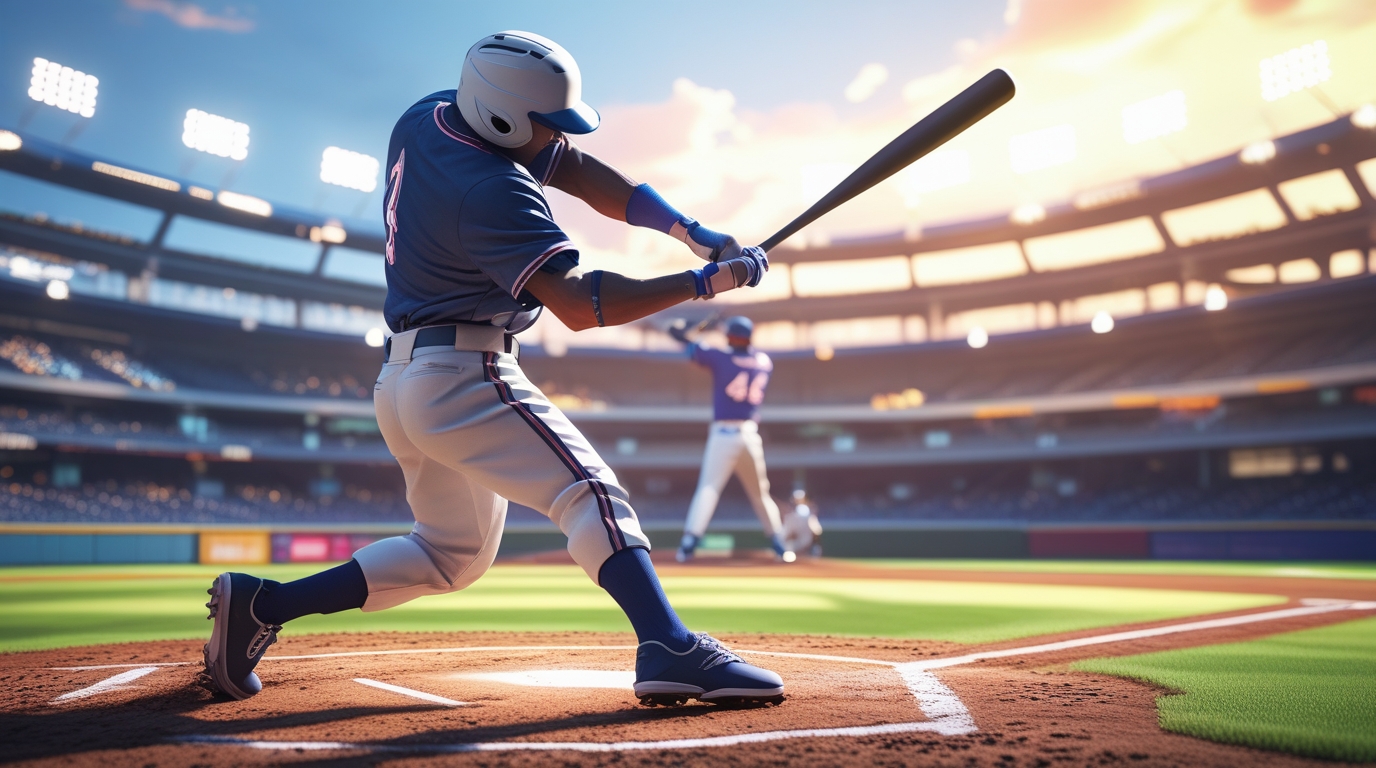How to Play Baseball: A Complete Beginner’s Guide for New Players

Learning how to play baseball is one of the most exciting ways to get into America’s favorite pastime. Whether you’re watching MLB games, joining a local team, or helping your child learn the sport, understanding the rules, positions, equipment, and strategies makes the entire experience far more enjoyable. Baseball might look simple from a distance, but once you get on the field, you discover it’s a beautiful combination of skill, timing, teamwork, and smart decision-making.
What Is Baseball? A Quick Overview
Baseball is a bat-and-ball sport played between two teams of nine players. The goal is to score runs by hitting the ball and safely reaching a series of four bases arranged in a diamond shape. One team plays offense (batting) while the other plays defense (fielding). After three outs, the teams switch roles.
A standard baseball game has nine innings, and the team with the most runs at the end wins.
Understanding the Baseball Field
Before learning how to play baseball, it helps to know the layout of a typical baseball field:
1. The Infield
Includes:
- Home plate
- First base
- Second base
- Third base
- Pitcher’s mound
2. The Outfield
Includes:
- Left field
- Center field
- Right field
Outfielders cover long hits, while infielders handle balls hit closer to the bases.
Basic Rules of Baseball
1. Scoring Runs
A player scores a run when they:
- Hit the ball
- Reach first base safely
- Continue to second, third, and finally home plate
Reaching all four bases without being tagged or forced out results in a run.
2. Outs
The defensive team aims to get three outs to end the half-inning.
Outs happen when:
- The ball is caught before touching the ground (fly out)
- The runner is tagged with the ball
- The ball reaches a base before the runner does (force out)
- The batter gets three strikes
3. Strikes and Balls
- Strike: The batter swings and misses, or the pitch enters the strike zone.
- Ball: A pitch outside the strike zone that the batter doesn’t swing at.
Four balls = walk (automatic safe to first base).
4. Home Runs
A ball hit out of the park in fair territory = automatic run for the batter and any runners on base.
Essential Baseball Positions Explained
When learning how to play baseball, knowing each position helps you understand how teams work together.
Infield Positions
- Pitcher: Throws the ball toward home plate.
- Catcher: Receives pitches and prevents base runners from advancing.
- First Baseman: Catches throws and covers first base.
- Second Baseman: Fields ground balls between first and second.
- Shortstop: Covers the area between second and third; often the most athletic position.
- Third Baseman: Handles fast grounders and bunt attempts.
Outfield Positions
- Left Fielder
- Center Fielder
- Right Fielder
They track deep fly balls and prevent extra-base hits.
How to Play Baseball: Step-by-Step for Beginners
1. Learn How to Bat
Batting involves:
- Proper grip
- Balanced batting stance
- Eye on the pitcher
- Swing timing
- Follow-through
Good hitters practice reading pitches and improving hand–eye coordination.
2. Learn How to Throw and Catch
Catching fundamentals:
- Keep glove open
- Use two hands
- Position yourself behind the ball
Throwing basics:
- Step with your opposite foot
- Rotate the hips
- Keep elbow up
- Follow through
3. Learn How to Pitch
Pitchers must:
- Maintain balance
- Use a consistent windup
- Control pitch speed and location
Beginners start with fastballs and gradually learn curveballs and sliders under proper coaching.
4. Learn Base Running
Smart runners:
- Take small lead-offs from bases
- Watch the pitcher’s movements
- Run through first base
- Slide safely at second or third
Base running speed and awareness both matter.
5. Learn Fielding Strategy
Fielders must understand:
- Cutoff plays
- Double plays
- Backing up bases
- Communication (“I got it!”)
Defense wins games as much as offense.
Baseball Equipment Checklist
To learn how to play baseball safely and effectively, you’ll need:
1. Bat
Aluminum for youth, wood for professional leagues.
2. Glove
Choose gloves by position:
- First-base mitt
- Catcher’s mitt
- Infield glove
- Outfield glove
3. Baseball
A hard cork-centered ball wrapped in leather.
4. Batting Helmet
Mandatory for all batters.
5. Cleats
Baseball-specific cleats improve traction on dirt and grass.
Practice Drills for Beginners
1. Soft Toss (Hitting Drill)
A partner tosses gentle pitches from the side while the batter practices swing mechanics.
2. Ground Ball Drills
Great for improving reaction time and glove work.
3. Throwing Ladder
Players throw increasingly longer distances while maintaining accuracy.
4. Base Running Cones
Helps players learn sharp turns and proper foot placement.
Safety Tips for All Baseball Players
- Always warm up properly
- Wear a helmet when batting
- Use proper sliding technique
- Stay hydrated during games
- Practice controlled swings
Safety is essential for young players especially.
Where to Learn More About Baseball
Helpful resources to continue your baseball journey:
1. MLB Official Rules
2. USA Baseball Youth Resources
These links offer free guides, rulebooks, drills, videos, and coaching tools.
Also Check: Xbox Cloud Gaming: The Future of Play Without a Console
Why Baseball Is Worth Learning?
Understanding how to play baseball gives players of all ages a chance to enjoy teamwork, develop physical skills, and build confidence. It’s a sport rich in strategy, history, and excitement—and once you know the basics, every game becomes more fun. Whether you’re stepping foot on the field for the first time or refreshing your knowledge, this guide offers everything you need to get started the right way.




